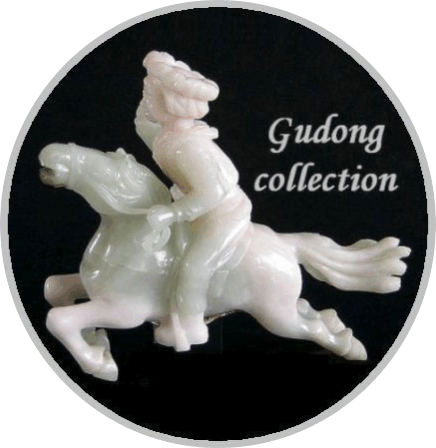Throughout history humans have sought ways of seeing their own image. A smooth water surface without ripples must have given early man the first glance of himself. In Chinese the word ‘mirror’ (Jian Jing) in fact refers to a large vessel filled with water. As soon as humans were able to create metal objects they discovered that a highly polished surface could reflect images. Chinese mirrors differ from mirrors made elsewhere in the world because they don’t have handles. They are circular and have pierced knobs through which a cord was passed for holding. The material from which they were made was bronze, an alloy of copper and tin. By increasing the tin contents, a bronze mirror would become harder and very white and silvery which of course served its purpose perfectly. Many mirrors made before the Tang period (618 – 907AD) contain up to 25% tin. Most Chinese mirrors were made by using the ‘lost wax’ (Cire perdue) method. The early artisans used bee’s wax which was a soft material that could easily be shaped and decorated. Once the wax model was ready, it was carefully covered in soft clay to form a mold. And when the clay had dried up, two holes were made in the material and the mold was heated in a fire which hardened the clay and made the molten wax run out. The hollow space within the mold was now filled with bronze and as soon as this had cooled down, the clay was removed and the rough bronze mirror revealed. The process was later speeded up by making molds consisting of two halves which could be used over and over again (see photo). However, the first mirrors from a two-part mold would be crisply cast but the frequent use of these molds would result in less sharp details at a later stage. After the casting process, a mirror needed grinding and polishing which was done with rub stones and ultimately created a highly reflective surface. Interesting fact is that many bronze mirrors made during the Western Han period (206BC – 23AD) and later have convex reflecting surfaces which enlarge the image. The majority of the mirrors in our collection are of a type which is called ‘Aged in water’ in China. They were beautifully cast in dense metal, carefully polished and almost free from corrosion. The reason that they survived practically unscathed was caused by the fact that they were wrapped in a silk or leather bag (see photo) which was again packed in a lacquer outer box protecting them against humidity.

